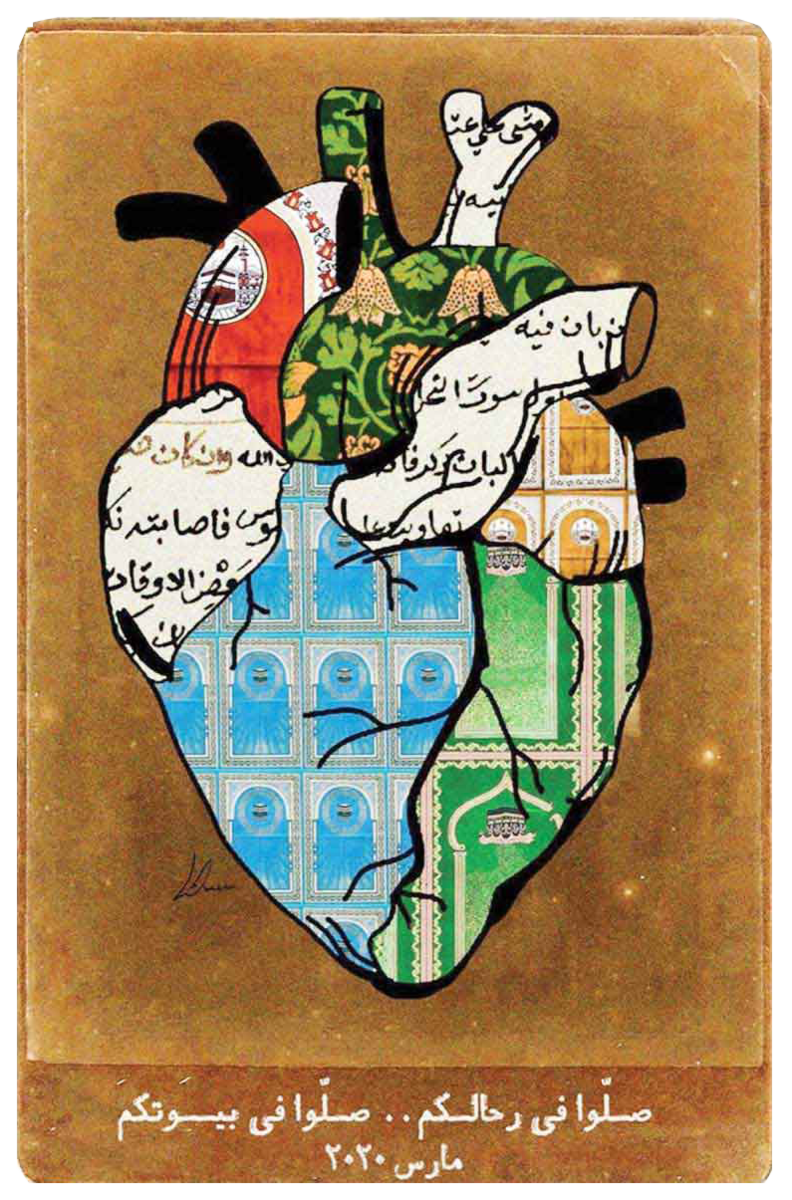Society
4.14.2020
Young Arab Artists healing through art

Artwork, through either processes of creating or viewing it, has long been used to explore sensitive emotions and address difficult topics. This time around, as well all bathe in great uncertainty in the face of a virulent virus to which currently have no cure for, the new generation Arab artists are seeking to alleviate those fears and create awareness of COVID-19 through their art.
The pandemic has infected us all to varying degrees, no matter the medical diagnosis. Regardless of Aristotle and Wilde’s endless debate on whether life imitates art or vice versa, it is undeniable that the works we see today throughout the Arab world greatly reflect our new, temporarily confined and sterilized reality.
Lina Ahmer, Saudi Arabia
As most mosques around the Kingdom and the globe closed their doors to the public, believers have had to transfer their five daily prayers out of the social sphere and into the safety of their homes. Although the Qur’an clearly states the importance of prayer in these religious buildings, these particular circumstances have forced interpretations the sacred texts to be altered to accommodate the lockdowns.
In Ahmer’s mixed-media painting, the prayer rugs are printed onto a human heart, depicting the collective yearning for the return to their habitual religious customs. “Hayya Alasalah” (come to the prayer), now has been replaced with “pray where you are,” or “pray at home.”
Sayed Al-Majed, Bahrain
Honoring all doctors fighting the epidemic, the sketch depicts a medical staff member with a raised peace sign within a circle representing the Earth and its global population under one common roof.
Beyond his gratitude for their tireless efforts he explains: “I believe that artists have an ethical and societal responsibility to devote their art in facing this crisis by spreading awareness and extending thanks and appreciation to the defenders of all humanity at this stage of our lives: Health workers.”
Razan AlNaas, Libya
In her collage, young AlNaas exposes how quarantine measures aren’t new for those living in war zones, with the text translating to: “In Tripoli, you can’t spell quarantine without war.”
An outbreak of the coronavirus in Libya could be “truly catastrophic” for the internally displaced and the almost 700,000 refugees in the country, the United Nations migration agency has warned.
Ichraq Bouzidi, Morocco
Social distancing definitely impedes on communal customs, especially the Atay or Moroccan mint tea time, a foundation of their social life, enduring over centuries. The piece, however, also sheds light on a renewed appreciation for a slower, homebound life, showing the ability to adapt to the constraining circumstances without abandoning old traditions.

The reverberating messages through these mixed-medias from all corners of the Arab world are ones of unity, creating awareness and documenting the hurdles through what still connects us all today: social media. Although art is certainly nowhere near as powerful as medicine in fighting off a virus, it plays its part in getting us through, also leaving an important mark for when this will all be over.
See also
Coronavirus: Art Dubai adaptspopular

